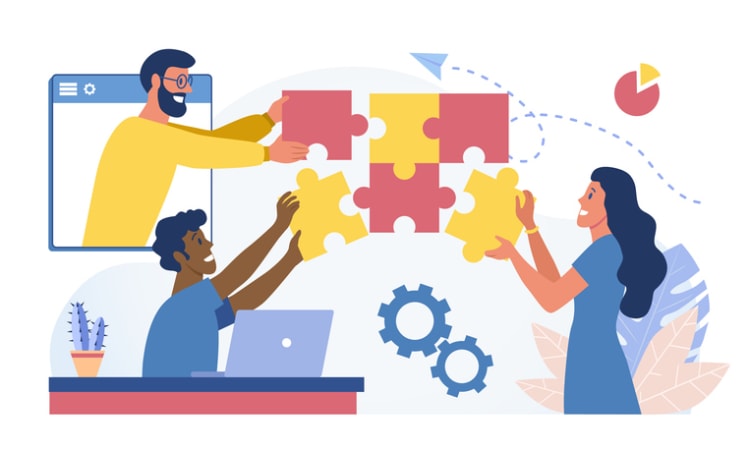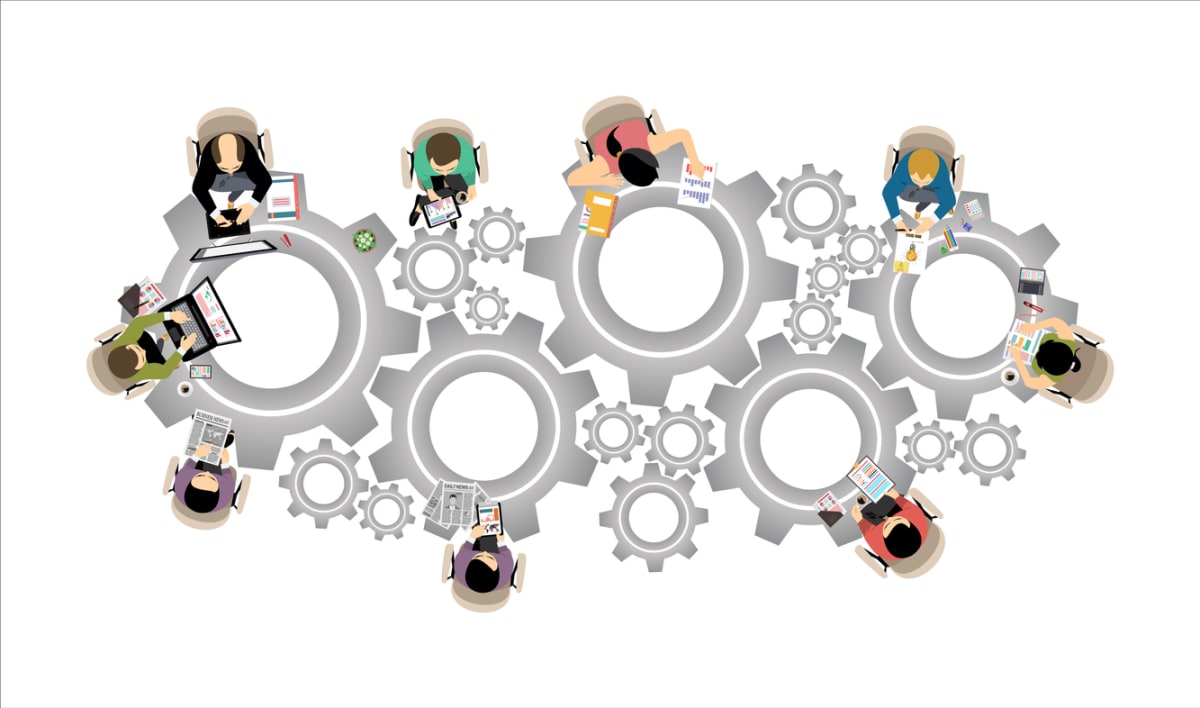The art of collaboration is key to any team’s success, and finding the right meeting cadence can make all the difference. Striking the perfect balance between too few and too many meetings can feel like a delicate dance, but it’s an essential skill in today’s fast-paced work environment. So, how can you ensure your team stays in sync, motivated, and productive without feeling overwhelmed by their calendars? Join us on this journey as we explore the secrets to mastering meeting cadence, tailored to your team’s unique needs, and unlock the potential of effective collaboration.
Key takeaways
- Understanding meeting cadence is essential for successful team communication and productivity.
- Finding the right balance of meeting frequency and duration is key to promoting collaboration, focus, engagement, and preventing burnout.
- Tools such as time tracking analytics can help optimize meetings for maximum efficiency by balancing synchronous & asynchronous communication.
Understanding meeting cadence

The proper meeting cadence is essential for maintaining the right meeting cadence, which is the lifeline of your team’s communication and productivity. A well-tuned rhythm ensures that everyone stays on track, focused, and engaged, thereby avoiding burnout and unproductive meetings.
The following discussion will revolve around the importance of meeting cadence, various meeting frequencies and their benefits, and their alignment with different team needs and objectives.
What is meeting cadence?
At its core, meeting cadence refers to the frequency, duration, and structure of meetings that make up the foundation of your team’s communication and collaboration. It’s like the tempo of a song, setting the pace for how your team works together and ensuring everyone stays in harmony.
When structured correctly, meeting cadence can be a powerful tool that:
- Keeps your team aligned
- Keeps your team focused
- Keeps your team engaged
- Prevents burnout
- Prevents inefficient use of time
From daily meetings like stand-ups to monthly strategy sessions, each type of meeting serves a distinct purpose and caters to different team needs. A tailored meeting cadence, which takes into account factors like team size and structure, project complexity and urgency, and communication preferences, can propel your team towards unprecedented success.
Why is meeting cadence important?
A well-planned meeting cadence is like a compass for your team, guiding them towards their goals and keeping everyone on the same page. However, finding the right balance can be a challenge, as too many meetings can lead to burnout and decreased productivity, while too few meetings can leave team members feeling disconnected and out of the loop. In fact, 46% of employees believe they attend too many meetings, highlighting the need for a well-thought-out meeting cadence.
Establishing a cadence that promotes productivity, collaboration, and satisfaction requires considering the frequency and duration of meetings, as well as the unique needs and preferences of your team members. Remember, the right meeting cadence can make all the difference in your team’s success, so it’s crucial to find the perfect rhythm that will keep everyone in harmony.
Common meeting frequencies and their benefits

Having explored the importance of meeting cadence, we will now examine common meeting frequencies and their benefits. Each meeting type caters to different team needs and objectives, providing a unique platform for communication and collaboration.
By understanding the various meeting frequencies, you can mix and match them to create the perfect cadence for your team.
Daily stand-ups
Daily stand up meetings are like morning coffee for your team - short, energizing, and essential for kick-starting the day. These focused meetings provide a platform for discussing immediate tasks, challenges, and progress updates, keeping everyone in the loop and ready to tackle the day ahead.
Incorporating daily stand-ups into your meeting cadence ensures alignment, focus, and motivation among all team members while also addressing any urgent issues that may arise.
Weekly team meetings
Weekly recurring meetings, also known as the weekly team meeting, are the backbone of your team’s communication, providing a consistent platform for discussing work-related topics, sharing updates, and addressing concerns. These team meetings are typically scheduled at a regular day and time, allowing team members to stay connected, present their progress, and address any arising challenges, roadblocks, and priorities.
Incorporating a weekly meeting cadence into your team meetings helps maintain your team’s track and enhance their collaborative efforts.
Bi-weekly bheck-ins
Bi weekly meetings are like a bridge between different departments or individuals working together to achieve a specific goal or project. These meetings are ideal for:
- Cross-functional collaboration
- Monitoring progress on specific projects
- Providing a platform for team members to share updates
- Discussing challenges
- Brainstorming solutions
Incorporating bi-weekly check-ins into your meeting cadence fosters a collaborative environment and allows for constant monitoring of your team’s progress toward shared objectives.
Monthly strategy sessions
Monthly meetings, also known as strategy sessions, are the time for your team to zoom out and focus on the bigger picture. These meetings are dedicated to long-term planning, decision-making, and performance evaluation, allowing your team to assess their progress, set new goals, and discuss strategic initiatives.
Incorporating monthly strategy sessions into your meeting cadence ensures your team’s alignment with the company’s long-term vision and facilitates their growth and evolution.
Quarterly reviews
Quarterly meetings are like a report card for your team, providing an opportunity to assess progress, set new goals, and discuss strategic initiatives. These meetings are typically held at the end of each quarter, giving your team a chance to reflect on their achievements, identify areas for improvement, and plan for the future.
Incorporating a quarterly meeting cadence into your schedule ensures your team’s progress and continuous excellence in their work.
Factors to consider when choosing your meeting cadence

Choosing the right meeting cadence for your team is like crafting a tailor-made suit - it’s essential to consider various factors to ensure the perfect fit.
We will now explore some of the key factors to consider when determining the most effective meeting cadence for your team, including team size, project complexity, and communication preferences.
Team size and structure
Team size and structure can have a significant impact on the frequency and duration of your meetings. Larger teams often require more frequent communication to stay aligned and coordinated, while smaller teams may need fewer meetings to stay in sync.
Considering your team’s unique size and structure allows you to strike the right balance of meeting frequencies, ensuring everyone remains connected and works together effectively.
Meeting technology: consider using a virtual office software
As the business environment transforms to accommodate remote and hybrid work models, the challenges of orchestrating effective meeting cadence likewise need to evolve. Skilled facilitators must not only adapt to the needs of participants scattered across locations but how to best handle different time zones with when setting up meeting cadances.
In response to this changing landscape, many companies adopting virtual office platforms. Kumospace has risen to global prominence, providing an integrated solution that merges video conferencing, team messaging, and spatial audio to facilitate better meetings. This software enhances both the flow and the effectiveness of communication and collaboration, ensuring that the cadence of team meetings remains optimal even in distributed settings.
Project complexity and urgency
The complexity and urgency of a project can dictate the need for more frequent meetings to ensure alignment and timely decision-making. If a project is particularly complex or requires immediate attention, you may need to hold more regular meetings to guarantee that all stakeholders are aware of the situation and that decisions are taken promptly.
Taking project complexity and urgency into account enables you to adjust your meeting cadence accordingly, ensuring your team stays on track.
Communication preferences
Different team members may have varying communication preferences, which should be taken into account when determining meeting cadence. Some team members may favour shorter, more frequent check-ins. On the flip side, others may prefer longer intervals between meetings..
Listening to your team’s preferences and incorporating them into your meeting cadence helps create an environment that caters to everyone’s needs and fosters a positive and collaborative atmosphere.
Tips for establishing an effective meeting cadence

Armed with an understanding of the importance of meeting cadence and the factors that influence it, let’s now explore some tips for establishing an effective meeting cadence that promotes productivity, collaboration, and team satisfaction.
We will now share valuable insights on setting clear goals and objectives, involving team members in decision-making, and the importance of being open to experimentation and adaptation.
Set clear goals and objectives
Setting clear goals and objectives for each meeting is like creating a roadmap for success - it ensures that your team stays focused and understands the purpose of each gathering. Establishing a meeting agenda with specific, measurable, achievable, relevant, and time-bound (SMART) objectives ensures that your team remains on track and works together effectively toward their goals.
Clear goals and objectives provide a sense of direction and purpose, making meetings more efficient and productive.
Involve team members in decision-making

Involving team members in the decision-making process is like gathering valuable input for a brainstorming session - it ensures that everyone’s preferences and needs are considered, leading to more effective decisions and enhanced team morale.
Engaging team members in the planning and execution of meetings fosters a sense of ownership and commitment to the team’s success, creating an environment where everyone feels heard and valued.
Experiment and adapt

Being open to experimentation and adaptation is like embracing the ever-changing landscape of the business world - it allows you to adjust your meeting cadence as needed to find the most effective approach for your team.
Trying different meeting frequencies and formats, and soliciting feedback from team members, allows you to fine-tune your meeting cadence to maximize productivity and collaboration.
Remember, the key to success is being flexible and adaptable in the face of change.
Balancing synchronous and asynchronous Communication
In the quest for the perfect meeting cadence, it’s essential to strike a balance between synchronous and asynchronous communication. Both forms of communication have their merits, and understanding how to leverage them effectively can help you maintain an efficient meeting cadence that keeps your team aligned, engaged, and productive.
The role of synchronous meetings
Synchronous and asynchronous meetings both play a crucial role in today’s work environment. Synchronous meetings, or real-time gatherings, are essential for fostering collaboration, decision-making, and problem-solving. These meetings provide a platform for team members to interact, share ideas, and address challenges in real-time, ensuring that everyone stays on the same page and moves forward together.
Incorporating synchronous meetings into your meeting cadence harnesses the power of real-time collaboration and drives your team to new heights of success.
The advantages of asynchronous communication
On the flip side, asynchronous communication offers numerous benefits, such as increased flexibility, reduced meeting time, and greater focus on critical tasks. By allowing team members to contribute at their own pace and in their own time, asynchronous communication can help to reduce the pressure of constant meetings and enable your team to work more efficiently and effectively.
A meeting cadence that balances synchronous and asynchronous communication caters to everyone’s needs and promotes productivity.
Tools and techniques for streamlining your meeting cadence
In this digital age, there are numerous tools and techniques available to help streamline your meeting cadence and make your team’s meetings more efficient and effective.
We will now explore some of the most popular tools and techniques, including virtual meeting platforms like Kumospace, meeting management software and time tracking and analytics, that can help you optimize your meeting cadence and enhance team collaboration.
Meeting management software
Meeting management software is like a personal assistant for your team’s meetings, automating scheduling, agenda creation, and follow-up tasks to make meetings more efficient and effective. Leveraging these powerful tools streamlines your team’s meeting processes, ensuring that everyone stays on track and focused on their goals.
From scheduling and reminders to AI meeting notes and analytics, meeting management software can help you schedule meetings, optimize your meeting schedule, and drive productivity.
Time tracking and analytics
Time tracking and analytics tools can provide valuable insights into the effectiveness of your team’s meetings, helping you optimize your meeting cadence for maximum productivity. Monitoring how your team spends their time in meetings and identifying areas for improvement helps to fine-tune your meeting cadence, ensuring that everyone stays aligned, focused, and engaged.
Remember, the key to an effective meeting cadence is finding the right balance between synchronous and asynchronous communication, and using the right tools can help you achieve that balance.
Summary
In conclusion, finding the right meeting cadence is an essential skill for fostering productive, collaborative, and engaged teams. By understanding the importance of meeting cadence, exploring common meeting frequencies and their benefits, and considering factors such as team size, project complexity, and communication preferences, you can create a tailor-made meeting cadence that drives your team to success. Remember to set clear goals and objectives, involve team members in decision-making, and be open to experimentation and adaptation. With these strategies in place, you can unlock the full potential of effective collaboration and propel your team to new heights.
Frequently asked questions
Establishing a meeting cadence encourages consistent communication and productivity. It is often used when referring to frequency of occurrence, for example "Let's meet on a weekly schedule" meaning they want to meet once a week. A daily calendar means they want to meet every day, and a monthly calendar means they want to meet once a month.
Cadence at work is the frequency, format and sequence of meetings between a manager and their team members, giving them an opportunity to share views and information. This type of cadence helps to ensure that everyone is on the same page and that any issues or concerns are addressed in a timely manner. It also helps to build trust and understanding between the manager and their team.
Meeting cadence refers to the frequency of team meetings, or how often recurring meetings are held. Examples of different meeting calendars include weekly, bi-weekly, monthly, and quarterly, helping team members better plan their schedules and prioritize their tasks.
Creating a meeting cadence involves setting clear objectives for each meeting, scheduling them at regular intervals, inviting only essential participants, setting time limits, communicating information in advance, and encouraging open communication and active listening. This helps ensure that meetings are productive and efficient, and that everyone is on the same page. It also helps to create a culture of collaboration and trust.
Experiment with different meeting frequencies and formats, considering factors such as team size, project complexity, urgency, and communication preferences. Soliciting feedback from your team members will help you find the right cadence for your team.





